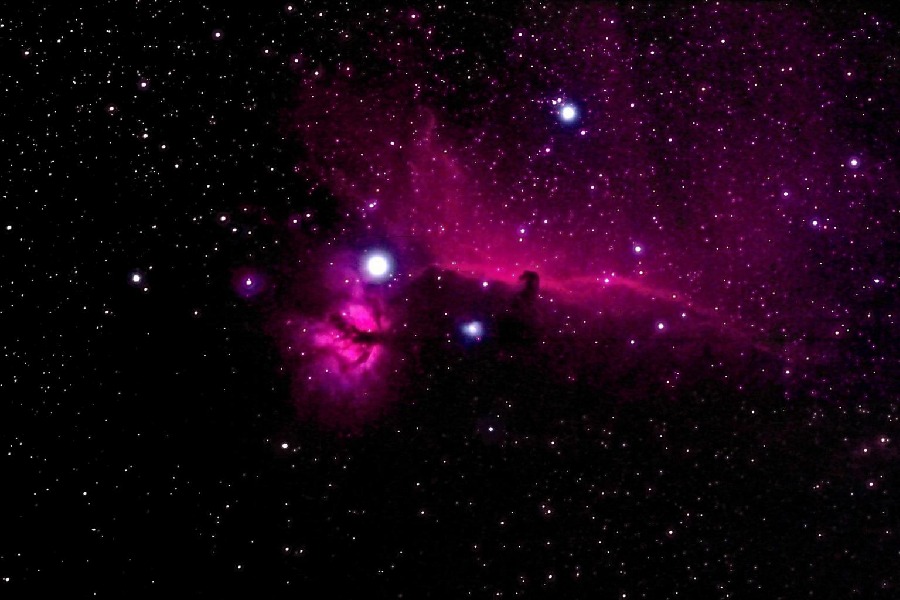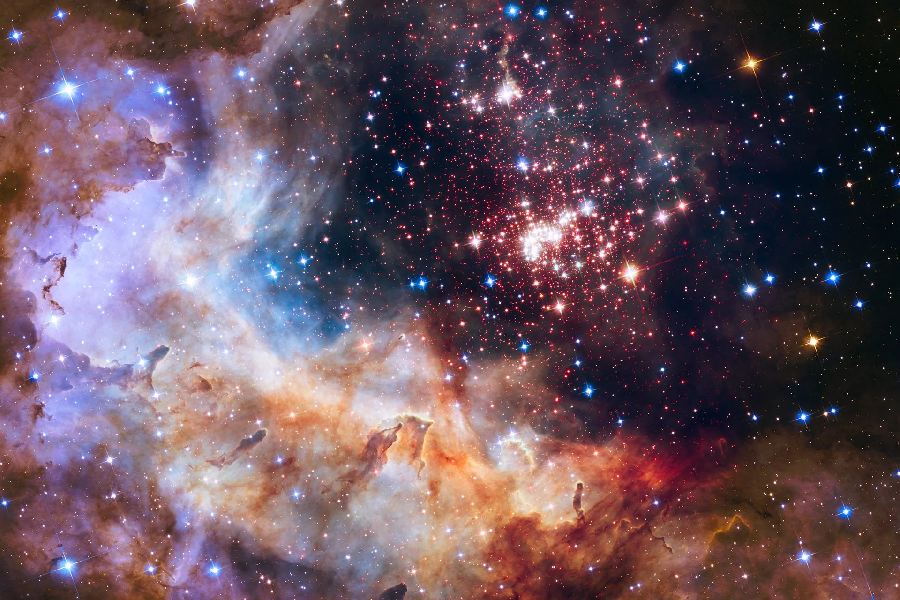Among the interstellar clouds dotting our galaxy exist beautiful nebulae glowing in vivid hues. But surprising complexities underlie their shining exteriors. How do emission and reflection nebulae differ? We will decode what makes certain gas and dust clouds shine on their own while others simply reflect.
Discover why some nebula types blaze infrared or radio frequencies beyond human vision yet harbor hidden stellar nurseries. Learn how ultraviolet radiation and stellar winds sculpt galactic clouds over eons, leaving diffuse remnants still gravitating together slowly.
Expect insights into the Doppler shifts indicating clouds drawing close or moving away rapidly. See how spectra reveal ionized atomic shells mixed with molecular gasses and dusty regions prone to casting shadows.
Our journey contrasts key energy sources powering nebulae, passive or active, while framing an intricate background ideal for tracing galactic structure and evolution.
How Do Emission and Reflection Nebulae Differ?
Emission nebulae emit their own light. Hot, young stars within them energize the gas atoms, causing them to glow in various colors, often red, due to abundant hydrogen.
Reflection nebulae, on the other hand, don’t emit their own light. Instead, they reflect light from nearby stars, appearing bluish because blue light scatters more effectively. They resemble illuminated clouds in the night sky. Unlike emission types, they do not contain ionized gasses, attaining a characteristic blue appearance through dust efficiently scattering blue wavelength light.

Emission Nebulae
What are emission nebulae
Emission nebulae are interstellar clouds of ionized gas. They glow brightly with emitted light. This light comes from the nebula itself. It is not reflected light. Unlike reflection nebulae, which shine by reflected starlight, emission nebulae produce their own visible light.
This occurs through a process called ‘recombination’ whereby ionized atoms capture free electrons, releasing energy in the form of photons. Most of the light comes specifically from ionized hydrogen, which gives emission nebulae a characteristic red glow.
Ionization by nearby hot stars
The ionization source is high-energy radiation from nearby hot stars. These stars emit intense ultraviolet light. This radiation strips electrons from surrounding hydrogen gas atoms. This ionizes the hydrogen.
The hot stars producing this ionizing radiation are usually young blue stars located within the nebula or adjacent molecular clouds. Their extreme temperatures produce copious UV emissions.
Glowing ionized gas
The ionized hydrogen atoms later recombine. Recombination involves capturing free electrons, which produce energy released as visible light. Other elements like oxygen also make emission nebulae glow vibrantly across a range of colors.
As electrons cascade down quantized energy levels within ions, the emitted photons create signature colors from reddish hydrogen spectra through to blue/green oxygen emissions.
Examples of emission nebulae
The Orion Nebula
The Orion Nebula is one of the brightest and best-studied emission nebulae. It exhibits features like stellar nurseries along with ionized and neutral gasses glowing brilliantly red and blue hues tracing its structure.
Located in the Sword region of Orion, this nearby nebula offers detailed views of newly forming stars and protostar systems within the gas clouds through powerful telescopes. These afford insights into the stellar life cycle within vividly glowing interstellar environments.
Vibrant colors
Hydrogen-alpha light dominates many emission nebulae’s red glows. But ionized oxygen, nitrogen, and sulfur create green, blue, and red regions too in stellar surroundings like Orion’s nebula, creating vibrant cosmic portraits shining via star power.
High resolution images reveal the range of colors clearly and the different elemental regions associated with massive stars at the nebula’s heart. These fuse heavier elements dispersing them into surrounding gas.
Reflection Nebulae
What are reflection nebulae
Reflection nebulae are clouds of interstellar dust. They consist of tiny solid particles that float between star systems. The nebulae shine by reflecting starlight, meaning they do not generate their own emitted light like emission nebulae.
Illumination from nearby stars
The interstellar dust acts like a cosmic mirror. Light from nearby stars is reflected and scattered by the dust particles out to our eyes. This creates hazy glowing clouds called reflection nebulae glowing across our galaxy.
Examples of reflection nebulae
The Pleiades Reflection Nebula
One prominent case is the Pleiades reflection nebula surrounding the famous Pleiades star cluster. The nebula’s characteristic blue hue traces to efficient scattering of blue wavelengths by the dust while redder light passes through, coloring surrounding emission objects.
Tiny dust grain sizes enhance shorter blue light wave scattering. This gives many reflection nebulae their tell-tale bluish appearance. Other reflection nebulae like the Witch Head Nebula show wispy pastel clouds reflecting light originating from bright neighboring stars just outside the dusty regions.

Composition & Illumination
Emission nebulae composition
Ionized gases and dust
The bright structure of emission nebulae comes primarily from ionized hydrogen gas atoms. Ionized forms of oxygen, nitrogen, and sulfur are also present. Interstellar dust is embedded and mixed with the hot gasses.
This ionized gas glows due to excitation by radiation from extremely hot, massive nearby stars. Their intense ultraviolet emission strips electrons off component atoms. Later, electron recaptures release photons seen as visible light.
Reflection nebulae composition
Dust and gas clouds
Reflection nebulae consist of large interstellar clouds of dust grains mixed with neutral gasses. These solid particles reflect and scatter light falling upon them rather than emitting it directly like heated ionized gasses.
The dust grains are composed of silicates or carbonaceous compounds down to submicron sizes. These efficiently forward scatter visible light while the gas remains cold and unseen except via obscuring effects.
Illumination via starlight reflection
Instead of glowing on their own, reflection nebulae shine from reflecting starlight originating from close yet exterior luminous stars. Nearby stellar radiation fields irradiate the opaque dust clouds to showcase scattered halo effects rather than transparency.
The illuminating stars are often bright blue giants or supergiants producing intense radiation fields. In visible wavelengths, much of this incident light undergoes single or multiple scattering events by grains before reaching our eyes as exquisite glowing interstellar clouds.
Nebula Colors & Spectra
Emission nebula colors
Emission lines from ionized gases
Glowing ionized gasses produce bright emission lines in nebulae spectra rather than continuous bands. Hydrogen, oxygen, nitrogen, and sulfur transitions produce signature red, green, blue, and red emission colors when electrons fall to lower quantized orbits.
Commonly red and pink
The predominantly red hue in many nebulae comes from the H-alpha emission line of hydrogen at 656 nm. Regions with more hot blue stars yield a pinker tone, blending hydrogen red with ionized oxygen’s green-blue hues at shorter 500 nm wavelengths.
Reflection nebula colors
Starlight scattering by dust
Unlike emission sources, reflection nebulae produce continuous spectral energy distributions spanning colors similar to their illuminating stars. But blue wavelengths around 400 nm scatter most efficiently off small dust grains.
This gives many reflection nebulae dominant blue tints, although some portions lit by redder stars show corresponding hues. The relative color distribution depends partly on stellar temperatures as well as dust grain sizes and compositions in a given nebula’s interstellar cloud.
Conclusion
Our exploration has shed light on the contrasting roles of emission and reflection nebulae in the grand story of stellar evolution.
While emission nebulae glow with the energetic birth pangs of young stars, reflection nebulae act as cosmic mirrors, serenely reflecting the light of their celestial neighbors.
These celestial objects, though seemingly dissimilar, participate in the dynamic dance of star formation and illustrate the diverse tapestry of the universe.
By uncovering how do emission and reflection nebulae differ, we gain a deeper appreciation for the intricate interplay between light, dust, and gas in the stellar life cycle. This knowledge ignites a sense of wonder for the cosmos and the awe-inspiring potential hidden within stardust.
